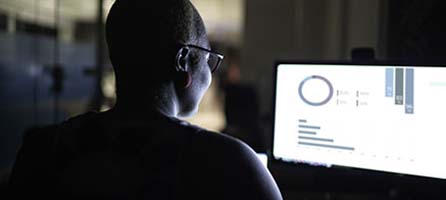How Will the Major Changes to Lease Accounting Standards (ASC 842/IFRS 16) Affect SAP Customers?
Public or private, billion-dollar corporation or family-run business, organizations everywhere will be disrupted by the new lease accounting standards. Put into effect by the US Financial Accounting Standards Board (FASB) and the International Accounting Standards Board (IASB), virtually all leases will now be required to be placed on the balance sheet. This sweeping, global change will quickly touch every industry in the world — FASB requires public and private companies to adopt by 2019 and 2020 respectively, and IASB requires compliance by 2019.
Whether you run SAP ERP on premise, are in the cloud with SAP Business ByDesign, or have already ramped up on SAP S/4HANA Finance, if your organization has any leases, then this change concerns you. Previously, many leases could be treated as rental expenses, but now, any lease spanning more than one year (for machinery, fleet, real estate, facilities, IT equipment, and so on) will have a right-of-use asset and corresponding obligation on the balance sheet. This means millions of dollars are now required to be on the books, which may affect future financial statements, disclosures, and debt covenants.
What Lies Ahead for Leases
Even though leases may represent only a small portion of a company’s overall asset base, the changes in leasing standards will directly impact a company’s expensing patterns, financial ratios for borrowing, and bottom line. For example, lessees will experience higher total expenses earlier in lease terms, which might cause profit and loss figures to decrease. Also, debt to equity ratios will increase, causing companies to look more leveraged, which can ultimately affect their stock price.
The accounting department’s responsibilities will increase, as all lease agreements must go through central accounting for lease classification tests, and accountants will need to start tracking depreciation, amortization, liabilities, and interest for leases in the same way they currently track fixed assets and asset retirement obligations. Process changes will need to be implemented to ensure that all regulatory requirements are met and that all necessary procedures are followed.
However, the repercussions of the new accounting standards extend well beyond the accounting group, imparting compliance changes that will have a ripple effect across the entire organization. For example, contract approval workflows will require further review as all agreements will need to be checked for leases to ensure they are properly routed to accounting.
Stakeholders should be aware of how the changes will affect the balance sheet, income statement, and cash flow. It is important to prepare creditors and investors ahead of time for how the standards might have an impact on financial metrics and future budgets. This forecasting also helps financial planners determine their strategies going forward.
Regardless of what accounting framework a business follows for reporting, it’s important to consider how long it might take to prepare for the new lease standards. While adoption for publically traded US corporations isn’t required until 2019, there will be a two-year lookback period of comparable financials, meaning most companies must have all necessary lease data available from January 1, 2017, onward.
Therefore, organizations should start collecting lease information immediately to make certain all required details are available for future reporting. Many companies might initially think they have a couple hundred lease agreements — but they may find that they really have many thousands of traditional leases, hundreds of embedded leases, and tens of thousands of right-of-use assets. Accounting departments will now be tasked with centrally managing hundreds-of-thousands of new journal entries annually. It’s important to start preparing for the convergence today to avoid being caught off guard.
Be Ready and Be Compliant
To transition to the new standards and stay compliant, companies need visibility into all their leases during the changeover and comparative period, as well as a way to track them moving forward. A good first step is to designate a lease process owner or group who can gather all lease data from each business department. Next, organizations with a lot of leases should put a system in place for automating the accounting, workflows, journal entries, and disclosure reporting to handle the impending complexity. Maintaining lease agreements in spreadsheets will become nearly impossible for companies with more than a handful of leases.
With PowerPlan’s Lease Accounting suite, businesses can better manage the new accounting regulations, create a more efficient system for managing leases company-wide, and achieve full transparency into lease agreements, ensuring compliance with the new standard. Through its centralized repository that manages the complete lease life cycle, the solution supports bookkeeping, compliance analysis, future expense forecasting, investment management, workflow approvals, and disclosure reporting — as well as comparable financials for the lookback period. To learn more about PowerPlan’s Lease Accounting suite, visit https://powerplan.com/solutions/lease-accounting-suite.






